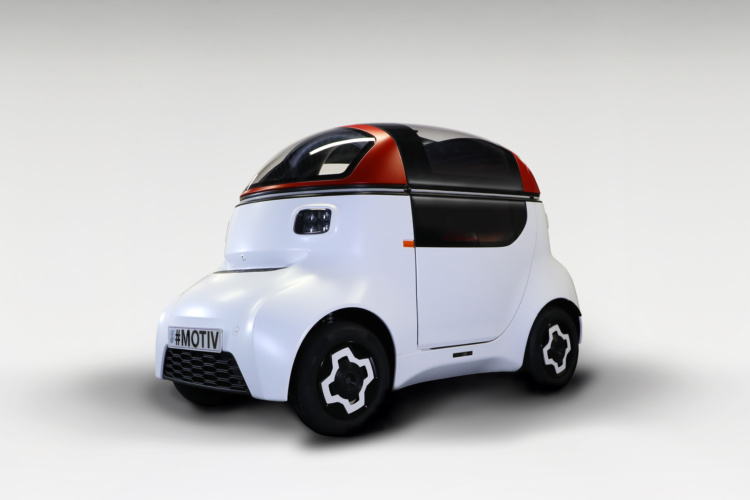Part-funded through the UK-government’s ‘IDP14’ programme, and unveiled at this week’s MOVE 2020 event in London (11 – 12th February), the vehicle, dubbed MOTIV, has been developed for adaptation to driverless use with any form of autonomous technology and is claimed to be the first of its kind to offer this degree of integration simplicity.
New Gordon Murray supercar claimed to be world's lightest
Interview: Formula One legend Gordon Murray
The pod is based on Gordon Murray Design’s iStream Superlight technology, which uses ultra-lightweight high strength extruded aluminium in the chassis, composite panels and door, and aluminium suspension to ensure that vehicle weight is kept below 450kg (excluding batteries). It is built on an ultra-lightweight quadricycle vehicle platform that is designed to meet full passenger-car crash safety requirements. Thanks to its compact dimensions (the pod is 1.6m high, 2.5m long and 1.3m wide) the vehicle is claimed to offer greater flexibility than any of its rivals.

Powered by a 20kW electric motor, and equipped with a 17.3kWh liquid-cooled battery pack, the group says the vehicle has a potential range of up to 100km and will operate at speeds of up to 40mph (65kph). It is equipped with CCS charging capability and can recharge from 20 per cent to 80 per cent battery in 40 minutes.
The power, motors and control systems have been developed by vehicle dynamics specialist Delta Motorsport. The platform uses Delta’s drive-by wire dedicated vehicle control architecture that operates the steering, propulsion and braking.
“In developing the MOTIV, we’ve demonstrated that the future of mobility is lightweight, battery-powered and private. The control systems integrated into the platform prove that electrified vehicles need not be heavy and cumbersome, but can be lithe, lightweight and energy saving. MOTIV’s ‘plug-and-play’ high-voltage system makes it a truly viable solution to the world of autonomous driving” commented Delta’s Engineering Director Nick Carpenter, Engineering Director.
The third partner, mobility specialist itMoves was responsible for the vision behind MOTIV, including the vehicle concept, strategy usability and visual image.
Commenting on the project, Gordon Murray said: “MOTIV has the potential to transform future mobility. The best way to make any vehicle commercially viable and cost-effective, while delivering first-class efficiency, is to make it as light as it can be while retaining the highest levels of safety. With MOTIV we have used our iStream technologies to create an ultra-lightweight body structure that delivers a vehicle that is compact, refined, safe and versatile, while remaining capable of significant range.”
The consortium is now looking to carry out pilot studies with autonomous technology providers, and claims that MOTIV could be ready for mass production within two to five years.




Glasgow trial explores AR cues for autonomous road safety
They've ploughed into a few vulnerable road users in the past. Making that less likely will make it spectacularly easy to stop the traffic for...